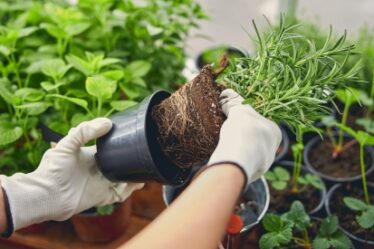
In an age where urban infrastructures are rapidly aging, the importance of efficient piping renewal strategies has become paramount. This article delves into the latest technologies and techniques reshaping the way we approach pipeline maintenance. From traditional methods to cutting-edge innovations, we explore how these developments are not only enhancing the longevity of piping systems but also promoting sustainability and cost-effectiveness.
The Evolution of Piping Technology: From Iron to Smart Pipes
Our journey begins with a historical perspective on pipe materials and construction methods. Starting from the era of cast iron and transitioning through materials like PVC and polyethylene, we witnessed a significant evolution. Today, the focus has shifted towards ‘smart pipes’ embedded with sensors and IoT technology, offering real-time monitoring and unprecedented control over pipeline systems.
Trenchless Technology: A Leap Forward in Minimizing Disruption
One of the most significant advancements in recent times is trenchless technology. This method, encompassing various techniques like pipe bursting and horizontal directional drilling, allows for pipe repairs and replacements without the extensive excavation that was once necessary. The result is a less intrusive, more environmentally friendly approach that significantly reduces surface disruption and overall repair time.
Pipe Relining: The Game-Changer in Pipeline Rehabilitation
The advent of pipe relining has marked a turning point in pipeline maintenance. This technique involves inserting a new pipe lining into existing pipelines, effectively renewing them from the inside out. It’s a cost-effective solution that extends the life of the pipe without the need for complete replacement. Importantly, pipe relining can be applied to a wide range of pipe diameters and types, making it a versatile and invaluable tool in modern piping strategies.
Robotic Pipe Repair: Precision and Efficiency Combined
Introducing robotics into pipe repair signifies a new era of precision and efficiency. These robotic systems can enter pipes, perform detailed inspections, and carry out repairs with minimal human intervention. This technology not only enhances the accuracy of repairs but also significantly reduces the risks and labor costs associated with traditional pipe repair methods.
Eco-Friendly Pipe Materials: A Step Towards Sustainable Infrastructure
Sustainability has become a key focus in pipe renewal, leading to the development of eco-friendly materials. These include recycled plastics and composites that are not only durable but also minimize the environmental footprint of pipe manufacturing and disposal. The use of these materials represents a crucial step towards more sustainable infrastructure practices.
Advanced Leak Detection Techniques: Preventing Water Loss
Leak detection has seen remarkable improvements with the integration of advanced technologies such as acoustic sensors and thermal imaging. These methods enable early detection of leaks, crucial for preventing water loss and averting potential damage. This proactive approach is vital in maintaining the integrity of water supply systems and ensuring efficient resource management.
The Power of Predictive Maintenance
The final piece in the puzzle is the integration of data analytics into piping systems. By analyzing data collected from sensors and smart systems, it’s now possible to predict when and where maintenance will be needed. This predictive maintenance approach optimizes repair schedules, reduces unexpected breakdowns, and ensures the continuous operation of vital infrastructure.
The Role of 3D Printing in Pipe Manufacturing and Repair
The integration of 3D printing technology is revolutionizing pipe manufacturing and repair. This technique allows for the rapid production of customized pipe sections and components, catering to specific repair needs with precision. 3D-printed parts can be designed to fit irregular shapes and sizes, offering a flexible solution for complex piping challenges. Moreover, this technology accelerates the repair process, significantly reducing downtime and associated costs.
Hydraulic Slip Lining: Enhancing Old Pipelines with New Life
Hydraulic slip lining stands as a noteworthy method in pipeline rehabilitation. This process involves pulling or pushing a new pipe liner into an existing pipeline, using hydraulic power. The liner is then expanded to fit snugly against the old pipe, creating a seamless, joint-free new inner surface. This method is particularly effective for repairing large-diameter pipes, offering a robust, long-lasting solution with minimal disturbance to the surrounding environment.
The Impact of Artificial Intelligence on Pipeline Management
Artificial Intelligence (AI) is making a profound impact on pipeline management. AI algorithms can analyze vast amounts of data from various sources, including sensors and historical records, to predict potential failures and optimize maintenance schedules. This proactive approach enhances piping systems’ safety and reliability and contributes to more efficient resource allocation and cost savings. AI-driven systems are increasingly being used to automate decision-making processes in pipeline management, leading to smarter, more responsive infrastructure networks.
Virtual Reality and Augmented Reality: Training and Simulation in Pipeline Repair
Virtual Reality (VR) and Augmented Reality (AR) technologies are transforming training and simulation in pipeline repair. These immersive technologies allow technicians to practice complex repair procedures in a virtual environment, reducing the learning curve and enhancing skill acquisition. Moreover, AR can be used in the field to overlay digital information onto the physical world, assisting technicians in identifying problems and performing repairs with greater accuracy and efficiency.
Embracing the Future of Piping Renewal
As we navigate through the complexities of maintaining modern infrastructures, it’s clear that embracing these emerging technologies and techniques is not just beneficial but essential. The future of piping renewal lies in innovative solutions that offer efficiency, sustainability, and reliability. By adopting these strategies, we pave the way for more resilient and effective urban infrastructure systems.

